
Which EU regions employ more women in high-tech? - Products Eurostat News - Eurostat
High-technology sectors are considered key drivers of economic growth and productivity and often provide well-paid employment opportunities. In 2022, there were 9.8 million people employed in high-technology sectors across the EU, corresponding to 4.9% of the EU’s total employment. The gender representation in this sector sees men accounting for just over two-thirds (67.2%) of the total. At the regional level (NUTS 2 regions), the French (Ile-de-France) and Spanish (Comunidad de Madrid) capital regions registered the highest number of people employed in high-technology sectors, 420 000 and 289 000, respectively. They were followed by 3 regions, which recorded more than 200 000 persons employed in high-technology sectors: Oberbayern in southern Germany, Lombardia in northern Italy and Cataluña in eastern Spain. At the bottom end of the distribution, there were 5 regions with less than 3 000 persons employed in high-technology sectors: the southern Italian region of Molise, together with four Greek regions – Anatoliki Makedonia, Thraki, Peloponnisos, Ipeiros, and Sterea Elláda. Women accounted for almost one-third (32.8%) of the total number of people employed in the EU’s high-technology sectors in 2022. The share of women in high-technology employment across NUTS 2 regions, ranged from a high of 50.2% in the Hungarian region of Nyugat-Dunántúl down to 8.3% in the Greek region of Thessalia. In fact, Nyugat-Dunántúl was the only region in the EU (at this level of detail) where there were more women than men employed in high-technology sectors. The next highest shares of female employment were recorded in the Italian region of Marche (48.6%) and another Hungarian region, Észak-Magyarország (48.1%). Source dataset: htec_emp_reg2 Would you like to know more about education and training in the EU? You can read more in the dedicated section of the Regions in Europe - 2023 interactive edition and in the dedicated chapter in the Eurostat regional yearbook - 2023 edition, also available as a Statistics Explained article. The corresponding maps in the Statistical Atlas provide a full-screen interactive map.
Eurostat is the statistical office of the European Union. Its mission is to provide high quality statistics and data on Europe.
High-technology sectors are considered key drivers of economic growth and productivity and often provide well-paid employment opportunities. In 2022, there were 9.8 million people employed in high-technology sectors across the EU, corresponding to 4.9% of the EU’s total employment. The gender representation in this sector sees men accounting for just over two-thirds (67.2%) of the total. At the regional level (NUTS 2 regions), the French (Ile-de-France) and Spanish (Comunidad de Madrid) capital regions registered the highest number of people employed in high-technology sectors, 420 000 and 289 000, respectively. They were followed by 3 regions, which recorded more than 200 000 persons employed in high-technology sectors: Oberbayern in southern Germany, Lombardia in northern Italy and Cataluña in eastern Spain. At the bottom end of the distribution, there were 5 regions with less than 3 000 persons employed in high-technology sectors: the southern Italian region of Molise, together with four Greek regions – Anatoliki Makedonia, Thraki, Peloponnisos, Ipeiros, and Sterea Elláda. Women accounted for almost one-third (32.8%) of the total number of people employed in the EU’s high-technology sectors in 2022. The share of women in high-technology employment across NUTS 2 regions, ranged from a high of 50.2% in the Hungarian region of Nyugat-Dunántúl down to 8.3% in the Greek region of Thessalia. In fact, Nyugat-Dunántúl was the only region in the EU (at this level of detail) where there were more women than men employed in high-technology sectors. The next highest shares of female employment were recorded in the Italian region of Marche (48.6%) and another Hungarian region, Észak-Magyarország (48.1%). Source dataset: htec_emp_reg2 Would you like to know more about education and training in the EU? You can read more in the dedicated section of the Regions in Europe - 2023 interactive edition and in the dedicated chapter in the Eurostat regional yearbook - 2023 edition, also available as a Statistics Explained article. The corresponding maps in the Statistical Atlas provide a full-screen interactive map.
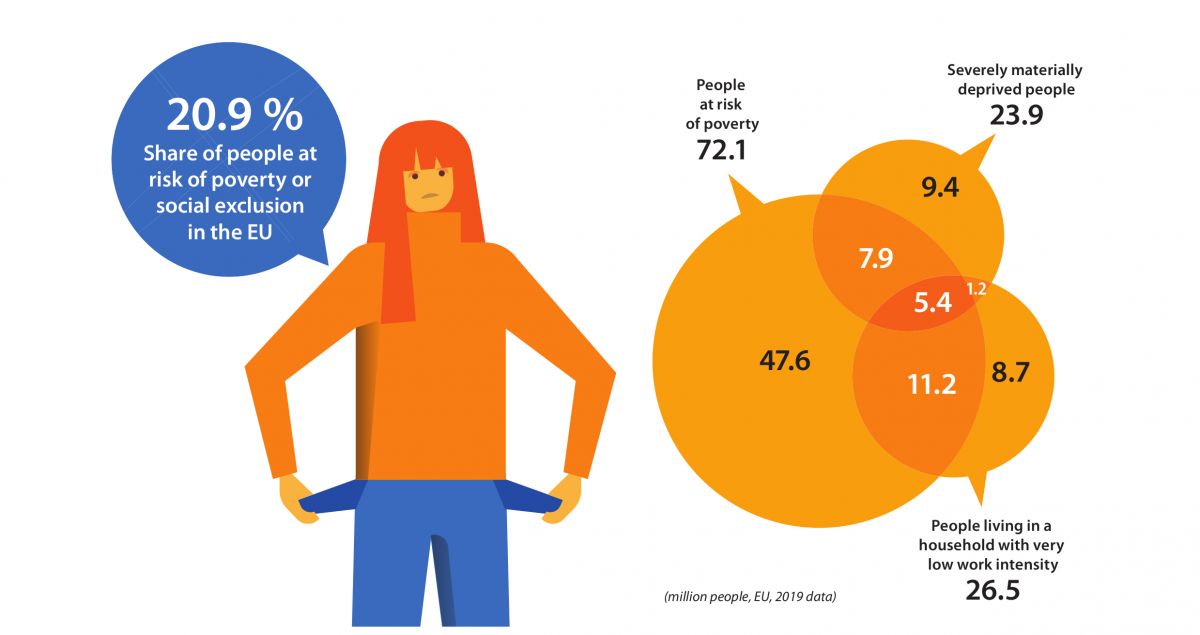
ESAP2 Eurostat: Living conditions statistics at regional level

Activity background - EU Contact
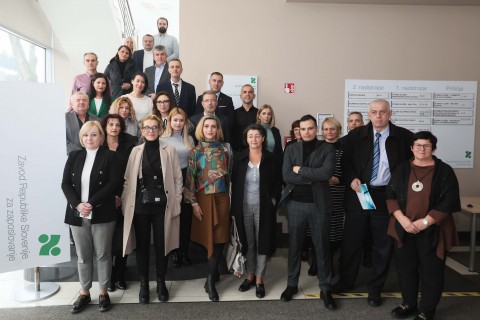
ESAP Observatory

Eurostat - 👩🔬 Across the EU regions (NUTS 1), the highest shares of women employed in #science and technology in 2022 were in: 🇱🇹 Lithuania and 🇫🇷 Corsica (both 64%) 🇱🇻 Latvia (

Activity background - EU Contact
Employment rate for non-EU citizens by Eurostat, 2020 : r/europe
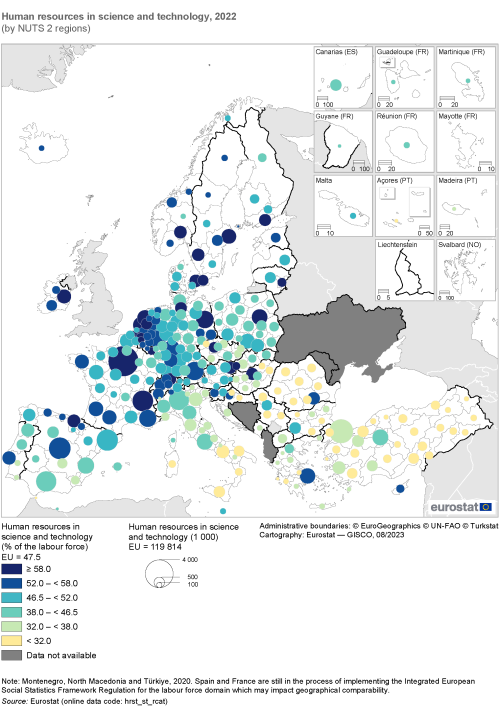
Research and development statistics at regional level - Statistics Explained
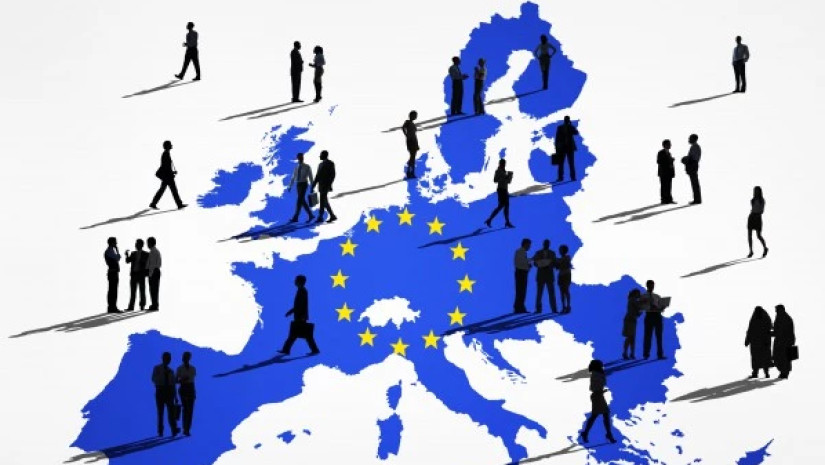
Which EU regions employ more women in high-tech?
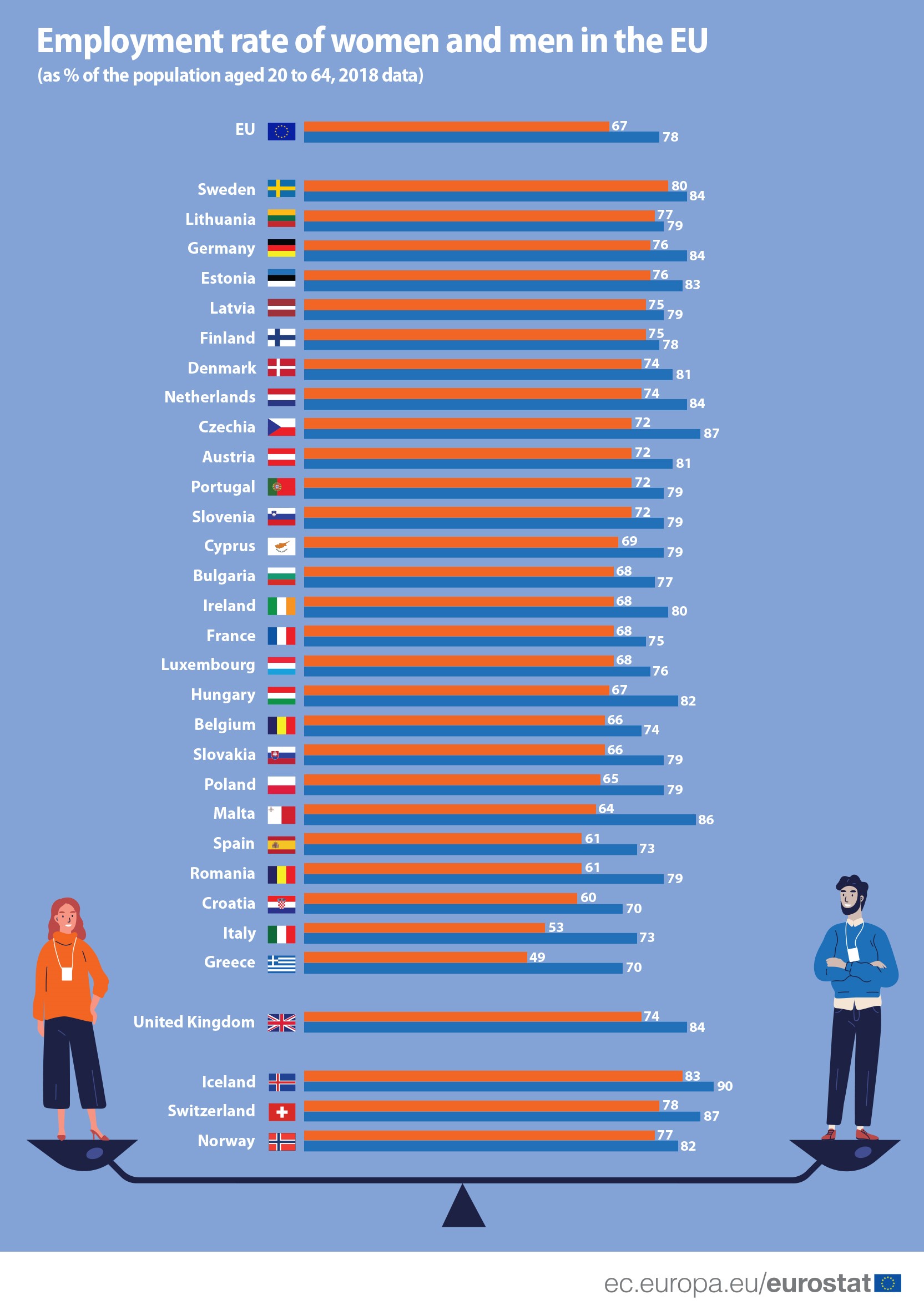
Women's employment in the EU - Products Eurostat News - Eurostat

eurostat – R Functions and Packages for Political Science Analysis
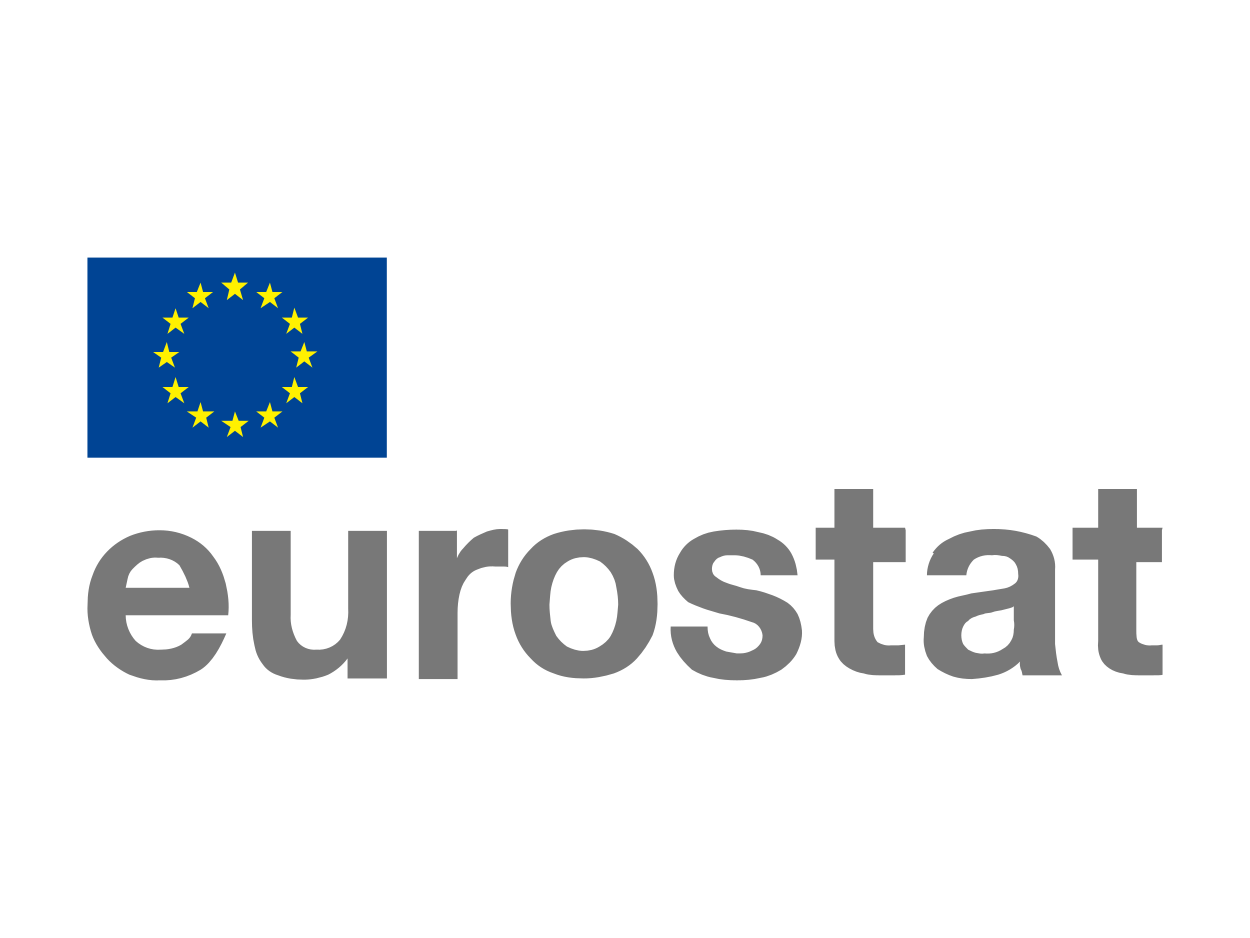
Which EU regions employ more women in high-tech? - Products Eurostat News - Eurostat









